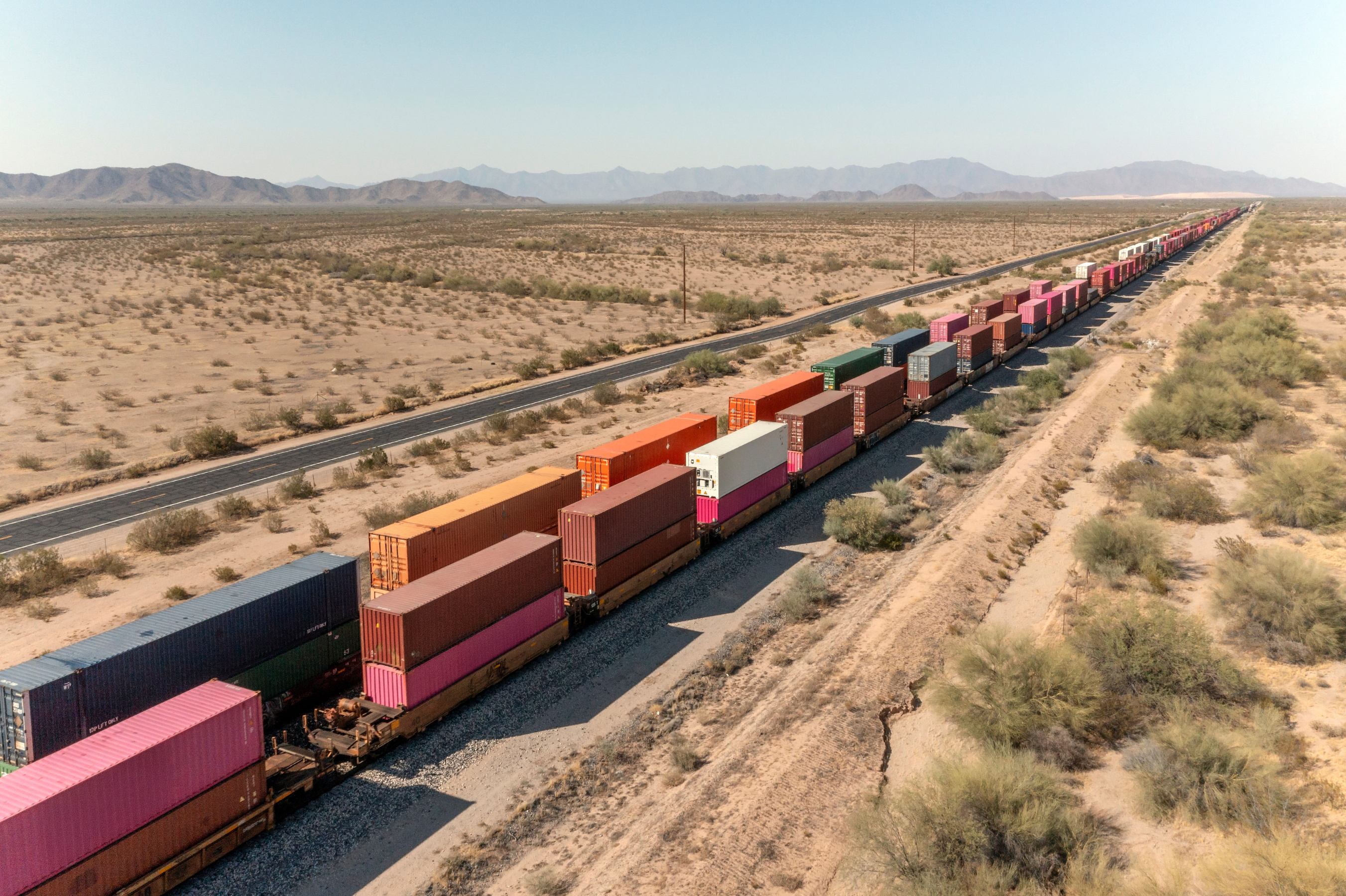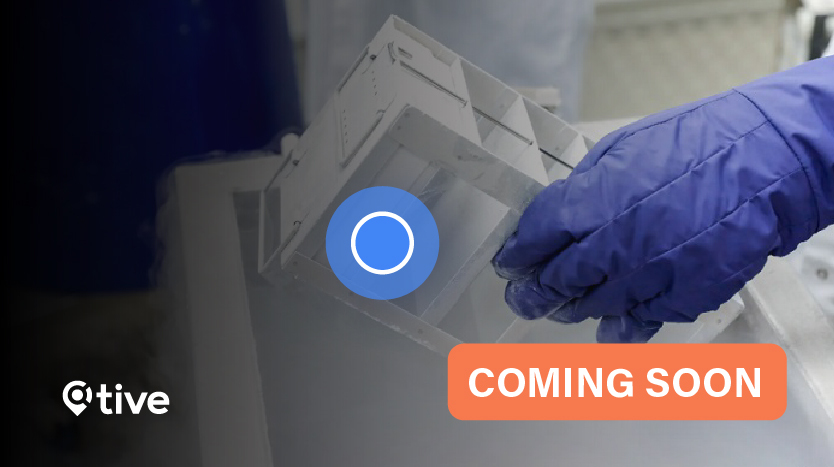The Inside Track: Cargo Theft Insights From the Front Lines
.jpg)
November 19, 2025
November 18, 2025
x min read

While attending a conference a few weeks ago, I noticed that cargo theft dominated every conversation: $111.88 million stolen last quarter, the average heist costing companies $336,000, and peak season around the corner—making everything worse with spiking freight volumes, trucks sitting longer at distribution centers, and valuable shipments sitting ducks.
My phone rings constantly with the same question from logistics managers, pharma supply chain leaders, and food safety directors: “How do we protect our cargo?”
After working with hundreds of North American shippers moving everything from vaccines to semiconductors, I’ve seen what works when push comes to shove deep in the trenches.
What We’re Seeing Firsthand Across the Market
Cargo theft used to follow predictable patterns. You knew the hot zones, the vulnerable commodities, the typical tactics. But you can throw out everything you thought you knew. Criminals have gotten smarter, bolder, and they’re hitting places and products you wouldn’t expect.
Theft Hotspots Have Spread Far Beyond California & Chicago
California and Chicago still see plenty of action, but remote stretches and isolated railyards have become prime hunting grounds. Rail segments through places like New Mexico see increased activity, especially at night when local law enforcement coverage thins out.
Many of our clients also note a significant uptick in Toronto-area incidents. Cross-border runs into Mexico create their own special brand of anxiety, as well, and have shippers testing new rail routes and switching transport modes entirely to avoid certain crossings where theft rings operate openly.
Europe also plays differently. Shorter hauls mean more pilferage than full-trailer heists. We’re tracking shipments through Italy and out of Charles de Gaulle, where organized crews target specific high-value pallets rather than entire loads.
What’s Getting Hit (& How That’s Changing)
Food, liquor, and electronics used to dominate theft reports, and still do. But metals have surged to the top of the target list—copper especially. Alabama and Indiana saw more copper theft last quarter than the previous two years combined. Thieves follow commodity prices like day traders, and right now copper pays better than almost anything else you can steal off a truck.
What’s more, holiday patterns tell their own story. Black Friday through New Year’s concentrates millions of dollars of retail goods into predictable shipping lanes. Weekend dwell times stretch longer. Security staffing drops to skeleton crews. Criminals plan months ahead for this window. Several clients now run 24/7 security operations during peak season after calculating that preventing one major theft pays for the entire program.
The New Criminal Tactics Keep Getting More Creative
Digital theft has gone beyond simple fraud. Criminals hack load boards, create fake rate confirmations, and send spoofed dispatch orders that route drivers to wrong locations while cargo disappears. This sophistication catches shippers off guard, especially those without strict verification protocols for every pickup.
Physical tactics show equal creativity. Thieves trail trucks from origin points and strike during that first coffee stop. Some crews can swap an entire trailer in under five minutes. We’ve tracked stolen loads to warehouses that pop up for a few weeks, process stolen goods, then vanish before anyone catches on.
The lengths criminals go to defeat real-time tracking systems would be impressive if it weren’t so costly. I’ve seen trackers end up in rivers, still pinging location data underwater for weeks. Others get attached to random long-haul trucks heading in the opposite direction of the stolen cargo. One crew drove our tracking device to a retail parking lot, and left it there while the actual shipment crossed into Mexico.
Every time I think I’ve seen it all, someone finds a new angle.
How Tive Helps You Fight Back Against Cargo Theft
Knowing what criminals do only gets you halfway. You need technology that catches theft attempts as they happen, people who know how to respond, and processes that turn one-off reactions into systematic prevention. At Tive, we combine human expertise with hardware that rides with your actual freight—and software that spots trouble immediately.
- Real-Time Door and Seal Alerts: Light sensors detect door openings while electronic seals catch tampering attempts, triggering instant notifications to your team (check out our brand new Tive Security Seal). You call the driver within seconds, escalate to dispatch if needed, and get law enforcement rolling while thieves are still on scene.
- Smart Route Deviation Detection: When your New York to Texas shipment suddenly veers toward Ohio, our system catches it immediately. These deviations often signal double-brokering scams or strategic theft attempts, and early detection means the difference between recovery and total loss.
- Trailer-Level Tracking That Stays With Your Cargo: Tractors switch, drivers change shifts, and app-based tracking follows the wrong asset. Our trackers attach to your actual trailer or container, so when criminals unhook and run, you still know exactly where your freight went.
- 24/7 Monitoring With Custom Response Protocols: Alerts without action plans waste critical response time. We help you build escalation playbooks that specify exactly who gets called, when, and what they should do. And if you need overnight coverage, our 24/7 monitoring team acts as your extended security operation.
- Analytics That Prevent Tomorrow’s Theft: Every incident teaches us something. We analyze patterns across thousands of shipments to identify high-risk time windows, problematic carriers, and dangerous route segments. You use these insights to adjust shipping schedules, update carrier requirements, and even negotiate better insurance rates based on demonstrated risk reduction.
Real Stories From the Front Lines of Cargo Theft Prevention
Theory meets reality when criminals target your freight. Let me share what happened when four different companies put these tools and strategies to work.
Fusion Transport: $12 Million Saved After Two Devastating Losses
Fusion Transport learned the hard way. January 2025 hit them with back-to-back trailer thefts totaling $4 million. They called us immediately. We deployed trackers that same week, and it didn’t take long to prove the investment right. On the first two loads armed with Tive trackers, two light alerts fired off in Rancho Cucamonga within blocks of each other. Their newly trained response team jumped on both alerts, called drivers, contacted local police, and saved both loads before thieves could empty them.
Over the next three months, Fusion prevented roughly $12 million in attempted thefts. The data tells an even better story. We identified which carriers showed up repeatedly in theft attempts, which departure times created vulnerability, and which routes needed different security protocols. Today, Fusion tracks every single shipment leaving their high-risk facilities. They even created a rechargeable tracker program where customers return devices for reuse, cutting costs while maintaining coverage.
When Thieves Got Creative With Our Own Trackers
A major logistics client of ours faced a sophisticated ring that almost fooled everyone. Drivers would depart normally, then pull into unmarked warehouses minutes later. While crews unloaded stolen goods, accomplices drove our tracking devices to Best Buy parking lots, making shipments appear delivered on schedule. The scheme worked perfectly until we noticed the pattern.
Our ground-truth data showed trailers stationary at warehouses while trackers moved independently. The client’s team connected the dots, identified the compromised drivers, and completely restructured their carrier vetting process. They now require multi-point verification at pickup and have electronic seals that flag any door opening within the first 50 miles of departure.
Two Other Anonymous Stories Worth Sharing
A well-known global e-commerce company faces hundreds of theft attempts weekly across its network. They lean heavily on our analytics to fight back, rerouting shipments around known hot zones and staffing up during high-risk night windows on rail corridors. The combination of more intelligent routing and strategic staffing has significantly reduced both theft events and recovery time when incidents do occur.
Down in Latin America, one 3PL learned just how resilient good tracking technology can be. Thieves discovered their hidden tracking devices and tossed one into a river, thinking they’d beaten the system. That tracker kept pinging for weeks from underwater, proving that quality hardware and the right response plan keep you in the fight even when criminals adapt. Well-placed, durable trackers give you options even when thieves think they’ve won.
Your Next Load Doesn’t Have to Be Their Next Target
Cargo theft keeps evolving because criminals follow the money. They watch commodity prices climb, study your peak season patterns, and know exactly when your security teams run thin. Every quarter brings new hotspots, different tactics, and creative ways to beat yesterday’s security measures. You can’t win this game by being static. You need real-time shipment visibility, people ready to act the moment something goes wrong, and hard data that tells you which routes, carriers, and time windows put your cargo at risk.
At Tive, we’re committed to staying ahead of these risks. Our trackers stay with your cargo through every trailer swap and route change. When doors open unexpectedly or shipments veer off course, you find out immediately—not at the next check call. We help you turn those alerts into action with response protocols that actually work at 2 a.m. on a Saturday. Most importantly, we show you the patterns across thousands of shipments so you can spot trouble before it happens.
Peak season is demanding enough without losing loads to preventable theft. Let’s get your tracking and response system running before criminals plan their next move. Get started with Tive today.


